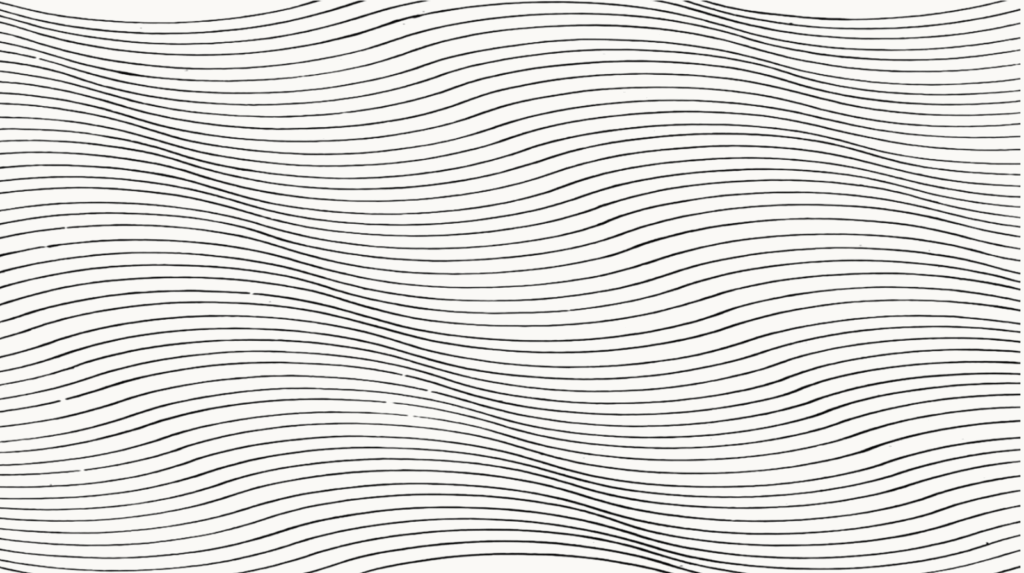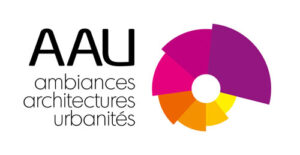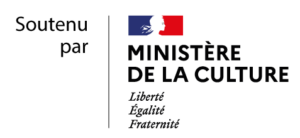
Localisation
Argalasti, Grèce
The 2025 IWTS focuses on the topic of “waves” exploring its analytical potential for the study of music and sound in the (Eastern) Mediterranean and across their transnational trajectories and resonances.
The wave, a performative materiality enacting sound’s reproductions, transmissions, diffractions, dispersions, vibrations, interferences, velocities, echoes, periodicities, frequencies and oscillations.
A haptic sonic movement inhabiting, and potentially occupying, circulating and distributed among bodies. One mediating emotions, themselves often felt as moving and cumulating in waves (waves of sorrow, love, fear…) constituting, permeating, aligning, and transforming bodies. Waves and fluctuations of emotions variously registered and played in music, mouthed and voiced in song, too.
A plurality – waves – infinitely becoming across restless choreographies, forming transient assemblages conditioned and arranged by the marine weather-world. Assemblages resonating their own lexicon of sounds and timbres, a lexicon also accommodating the ghostly auralities and silenced underwater cosmos hidden underneath.
A seemingly boundless watery space in motion dictating the limits of livelihood and death in the sea (as in the case of slavery and refugee necropolitics, for instance), producing audible geographies and their economies of perception, diverse strategies of dwelling and navigation, crafting the city-ports’ and islands’ soundworlds and horizons.
Waves defining marine citizenships and their sonic imaginations, seafaring, migrations and forced dislocations, trade routes, stories by travellers and explorers, scientific expeditions, “blue” economies and extractivisms, landscapes of colonization and war.
A dual metaphor, one one hand, for change, shifting aesthetic, social and political movements and their intricate resoundings, on the other, a metaphor for iteration, rhythmicity and periodicity.
Waves featuring communication and technological transmission, as is the case with radio fields among other sound technologies, regulating social practices, techniques of listening and spatial imaginaries at once reverberating locality and playfully remapping its range of spectralities.
The waves of architectural acoustics determining ways of inhabiting built environments (for worship, work, education, leisure, for institutional and residential spaces) and shaping their acoustic experiences as well as, their sometimes hegemonically moderated limitations.
The wave: the discursively elusive, indeterminate and apparently untranslatable, yet tactile and felt, object of ethnographic, historical and (ethno)musicological research. How do we write waves and how do we write of waves?
Waves of thought pointing to the liquidity of our theoretical imagination and foregrounding the possibilities of “thinking with waves”: a theory-navigating process open to re-configuration, relationality, resynthesis and re-learning, a sort of restless theory-making attuned to a ceaselessly becoming world.
The workshop is aligned with the sound festival organized by MOMus Experimental Centre for the Arts in January 2026. The festival also focuses on the topic of “wwwwavessss” and will host projects designed in the context of the IWTS workshop.
Jump and Wave: Sound, Movement, and the Break from the Caribbean Archipelago
Jessica Swanston Baker
Considering “waves” as an invitation to think with music and sound’s capacity to move us, to orchestrate retreats and returns, we engage with waves and sound through the musical practices of the Caribbean region. In the context of hurricanes and other forms of ecological destruction, we will listen to (and with) post-hurricane riddims—sonic responses to waves as sources of destruction— such as Puerto Rican reggaeton and Haitian Raboday. Understanding the Caribbean archipelago as a place that invites creative misinterpretations as a method, we will explore how fast-paced “jump and wave” carnival music such as soca and wylers draws our attention to the body as a site of cyclical and powerful oceanic movement. Another crucial aspect of a wave’s mobility is the break—the moment when a wave’s momentum and amplitude become so great that the crest overturns. This phenomenon mirrors a key element of Caribbean musicality: the energy of sound, dance, and revelry—jouissance—that culminates in a sonic break as the energetic apex of regional genres. By tracing these cycles of creation, rupture, and renewal, this presentation explores how Caribbean musical practices harness the ebb and flow of waves—both literal and sonic—to reimagine and re-sound creative possibility.

Attuning to the waves
Jean-Paul Thibaud
Waves act as a powerful resonator of our attentions and affects. What about the sonic existence of waves? On a provisional basis, we can distinguish three ways of tuning in to the sounds of waves.
The first mode involves molecular perception. We listen to the waves as close as possible to their foam. It is a matter of paying attention to the small perceptions made up of an infinite number of microscopic bubbles that explode on the surface of the water. This is the level of the infra-ordinary, of a barely audible world, at the threshold of the perceptible.
The second mode involves rhythmic perception. We listen to the waves breaking regularly on the beach. The uninterrupted movement of the waves and the constant alternation of ebb and flow produce a rocking effect. This is the level of the ordinary, everyday world to which we are accustomed and familiar with.
The third mode involves a cosmic perception. We listen to the waves unfold in the immensity and incommensurability of the sea. It is as if the boundaries between the ego and the world were disappearing, as if it were possible to approach a sense of eternity. This is the level of the extraordinary, of a borderline experience that induces an oceanic feeling.

Mediterranean Spectra
Gavin Williams
This session explores waves as a fold within scientific modernity, as both the object of and means to knowledge. We will consider waves as sites of relentless epistemic conversion, which at once facilitate the amassing of data and the creation of sensory worlds. Our focus will be upon the spectrogram as technique of for representing sound, light and radio waves across chemistry, astronomy, and music studies, and as a powerful means to environmental knowledge and environmental harm. A way of knowing waves, spectrograms are at once a means of making worlds: we will consider the world-sound-pictures they have generated over time and continue to produce across diverse fields of fossil fuel extraction, acoustic ecology, and climatology. We will examine wave-enabled themes of cosmology and planetarity in the context of the Mediterranean, inquiring after the worlds sounded and imaged from this region, together with how the Mediterranean looks and sounds from outer space. Participants will each receive a spectrographic gift in advance of the seminar: a picture, sound file, or short literary extract, which they will be asked to comment on in the course of the session.

Schedule (provisional)
Tuesday, August 26 (Moni Paou)
17:30 – 18:00 Welcome: workshop theme presentation
18:00 – 19:30
Invited Speaker: Jessica Baker (coordinator: Dafni Tragaki)
19:30 – 19:50 Break
19:50 – 20:10 P. Flampouris, E. Paxinou, N. Remy
20:10 – 21:00 G. Gavazza, lecture-performance
Dinner (Argalasti village)
Wednesday, August 27 (Horto village venue)
9:30 – 11:00
Invited Speaker: Gavin Williams (coordinator: Martin Stokes)
11:00 – 11:30 Coffee break
11:30 – 12:30 Panel and discussion: Boubezari, Prokos, Lykouris
12:30 – 12:45 Break
12:45 – 13:45 T. Deligianis (workshop)
BREAK
17:00 – 18:30
Invited speaker: J. P. Thibaud with Paxinou, Remy and Flampouris
19:30 – 19:00 Break
19:00 – 20:00 E-presentations: Kareem Samara, D. Barrett, N. Miskey
Dinner (Horto village)
Thursday, August 28 (Moni Paou)
9:30 – 11:00 Panel and discussion: Colanduoni, Polyzoidis, Corbera-Jaume, Filippaios
11:00 – 11:30 Coffee break
11:30 – 12:30 Anna Stroulia & Ilias Tsolis (ISTISTIST) (workshop)
BREAK
17:00 – 18.00 Sofia Grigoriadou (workshop)
18:00 – 18:30 Break
18:30 – 19:30 Katerina Maniou (workshop)
19:30 – 20:30 Nimisha Shankar (lecture performance)
Dinner and PA sessions
Friday, August 29
9:30 – 10:30 Papachristou & Samantas
10:30 – 10:50 Break
10:50 – 11:50 Closing remarks (coordination: Dafni Tragaki & Martin Stokes)

Special thanks to the Angelinis Hadjinikou Foundation for the generous bestowal of the Horto Seminar Venue.
The 4th International Workshop in Theory and Sound is co-organized by:
- The “Mobility Studies” Postgraduate Programme and the Social Anthropology Lab (Department of History, Archaeology and Social Anthropology), University of Thessaly,
- Department of Culture, Creative Media and Industries, University of Thessaly,
- Department of Architecture, University of Thessaly,
In collaboration with MOMus Experimental Centre for the Arts.
Organising committee: Dafni Tragaki, Dana Papachristou, Nicolas Remy, Yorgos Samantas, Petros Flampouris



